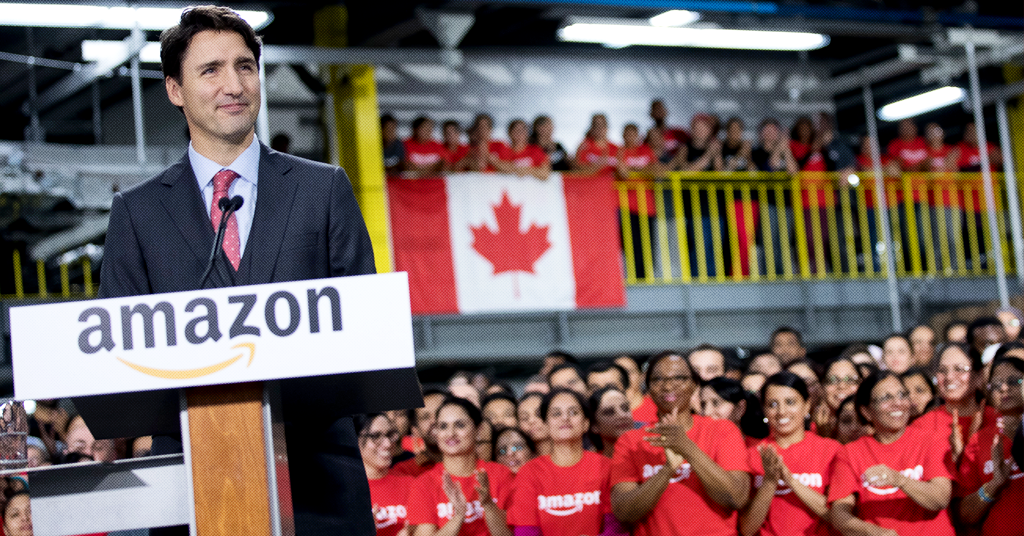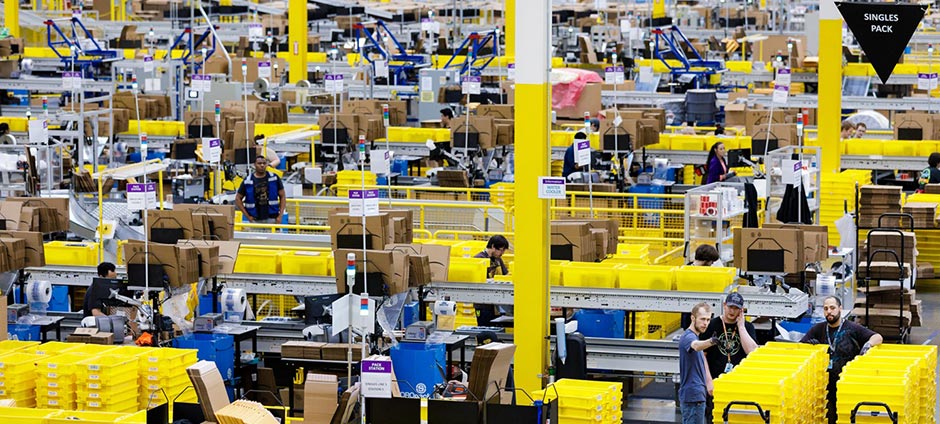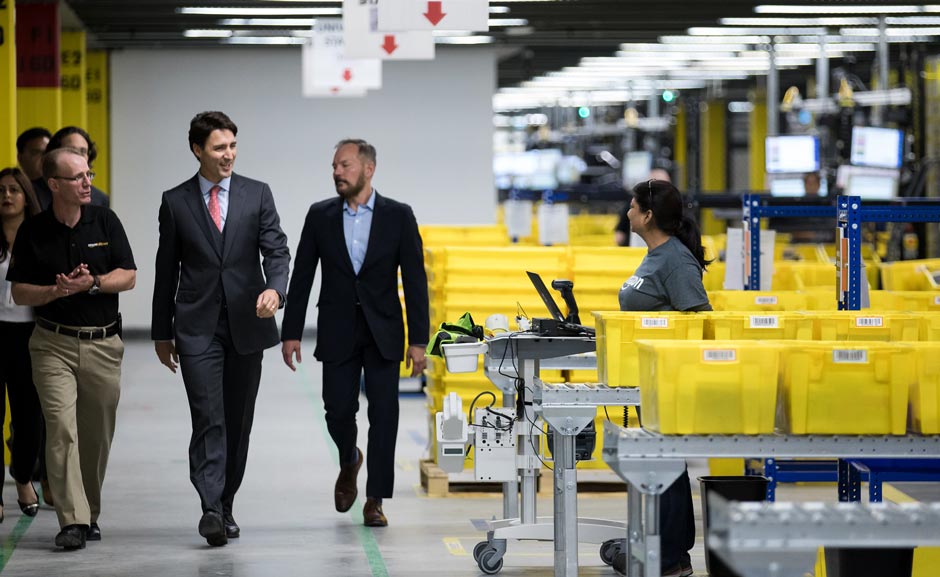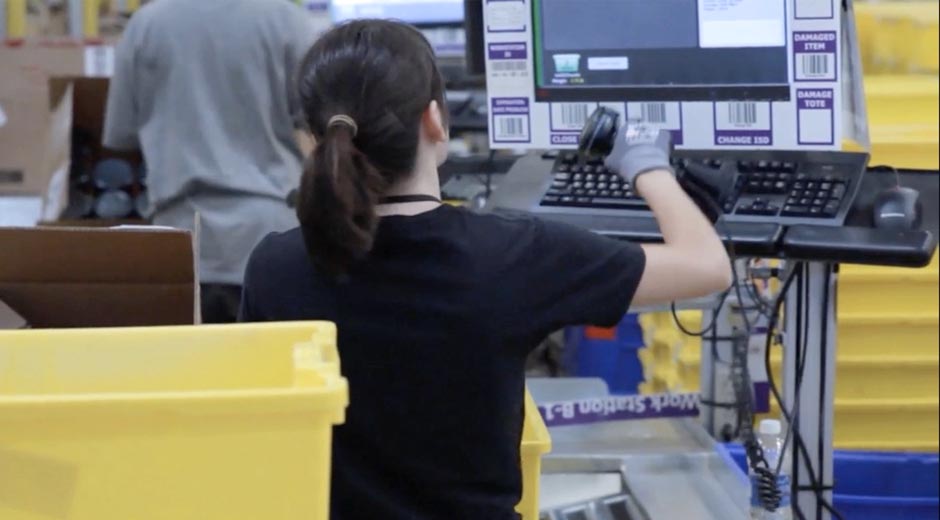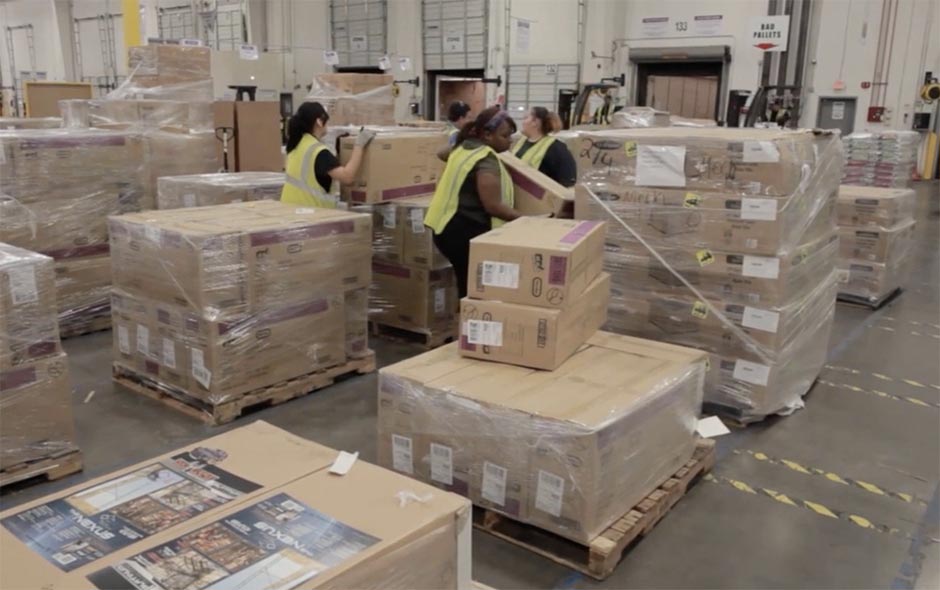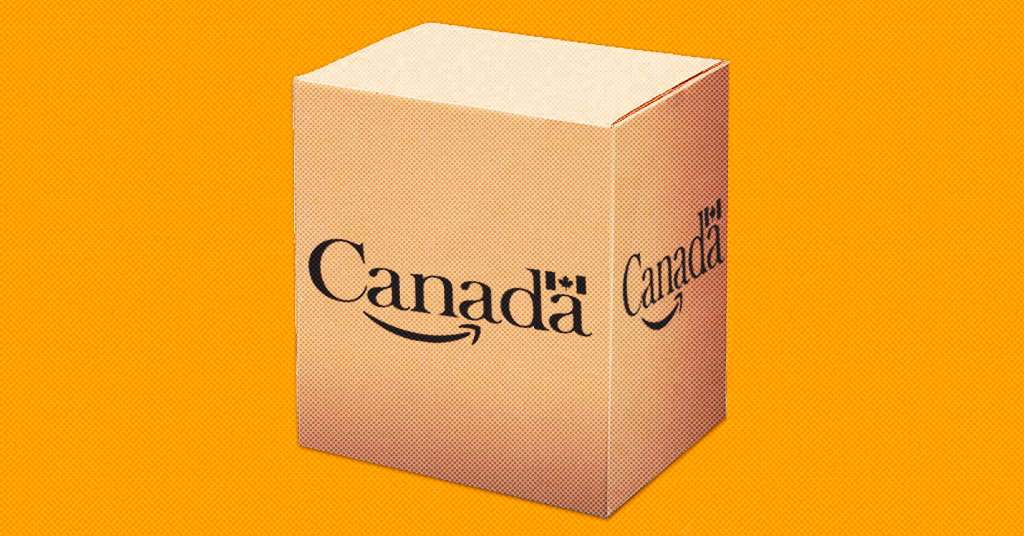 UPDATED
UPDATEDDoctor says he was removed from federal post after opposing funding for unproven drugs
BY NATHANIEL WEIXEL - THE HILL - 04/22/20
The former head of the federal office that will be at the forefront of developing a cure for COVID-19 said he was forced out after he prioritized science instead of promoting unproven treatments.
In a statement, Rick Bright said he was removed as the director of the Biomedical Advanced Research and Development Authority (BARDA) because he limited the broad use of chloroquine and hydroxychloroquine, two drugs that President Trump repeatedly pushed as potential cures without evidence.
The New York Times was the first to report Bright's statement.
Bright was moved to a narrower job at the National Institutes of Health (NIH).
“I believe this transfer was in response to my insistence that the government invest the billions of dollars allocated by Congress to address the Covid-19 pandemic into safe and scientifically vetted solutions, and not in drugs, vaccines and other technologies that lack scientific merit,” he said.
Bright said he "resisted efforts to fund potentially dangerous drugs promoted by those with political connections."
"Specifically, and contrary to misguided directives, I limited the broad use of chloroquine and hydroxychloroquine, promoted by the administration as a panacea, but which clearly lack scientific merit,” Bright said.
Hydroxychloroquine is used to treat malaria and conditions such as lupus and arthritis, and has not been approved for COVID-19.
Trump has called it a "game changer" against COVID-19, despite limited anecdotal evidence that it works.
“While I am prepared to look at all options and to think ‘outside the box’ for effective treatments, I rightly resisted efforts to provide an unproven drug on demand to the American public," Bright said.
BARDA is a small agency within the Department of Health and Human Services that was created in 2006 to help invest in drug and vaccine development projects for pandemic diseases such as Ebola and Zika.
The agency is expected to be at the forefront of public-private partnerships to develop a treatment for COVID-19. The most recent stimulus bill gives the agency an additional $1 billion to research, develop, manufacture and purchase COVID-19-related materials.
"Sidelining me in the middle of this pandemic and placing politics and cronyism ahead of science puts lives at risk and stunts national efforts to safely and effectively address this urgent public health crisis,” Bright said.
An NIH spokesperson said on Tuesday that Bright would be working to accelerate the development and deployment of new point-of-care coronavirus testing platforms.
In a statement sent late Wednesday, an HHS spokeswoman said it was Bright's support for chloroquine that directly led to the agency's acquisition of the drug.
"As it relates to chloroquine, it was Dr. Bright who requested an Emergency Use Authorization from the Food and Drug Administration for donations of chloroquine that Bayer and Sandoz recently made to the Strategic National Stockpile for use on COVID-19 patients," Caitlin Oakley said. "The EUA is what made the donated product available for use in combating COVID-19."
Bright is represented by attorneys Debra Katz and Lisa Banks of Katz, Marshall & Banks.
In a statement, Katz and Banks said Bright's removal was "retaliation plain and simple. The results from the Administration’s refusal to listen to the experts and to sideline those like Dr. Bright who point out any errors in the government’s response will continue to be catastrophic for the American people."
Katz and Banks said they will request that the Office of Special Counsel seek a stay of Bright's termination, and that he be permitted to remain in his position pending an investigation.
Top House Democrat calls for investigation of HHS vaccine chief's reassignment
BY NATHANIEL WEIXEL - 04/23/20

© Greg Nash
A top House Democrat is calling for an investigation into the ouster of vaccine expert Rick Bright from his role leading the Biomedical Advanced Research and Development Authority (BARDA).
Energy and Commerce Committee Chairman Frank Pallone Jr. (D-N.J.) wrote a letter Thursday asking the Health and Human Services (HHS) Office of Inspector General to investigate Bright's abrupt transfer to a more narrow role at the National Institutes of Health.
Pallone said he is concerned that the Trump administration has been politicizing public health agencies.
"Removing Dr. Bright in the midst of a pandemic would raise serious concerns under any circumstances, but his allegations that political considerations influenced this decision heighten those concerns and demand full accountability," Pallone wrote.
Pallone asked the OIG to look into who made the decision to reassign Bright, when it was made, and whether any political considerations affected the decision.
Bright on Wednesday alleged he was pushed out because he stood up for science, and limited the broad use of chloroquine and hydroxychloroquine, drugs being pushed without evidence of effectiveness by President Trump and other administration officials and allies.
“I believe this transfer was in response to my insistence that the government invest the billions of dollars allocated by Congress to address the COVID-19 pandemic into safe and scientifically vetted solutions, and not in drugs, vaccines and other technologies that lack scientific merit,” Bright said in a statement.
But Bright's ouster is complicated. An HHS spokeswoman said it was Bright's support for chloroquine that directly led to the agency's acquisition of the drug.
Bright has hired a pair of prominent D.C. lawyers and said he will be requesting whistleblower status.
Bright said he will be asking the OIG to "investigate the manner in which this administration has politicized the work of BARDA and has pressured me and other conscientious scientists to fund companies with political connections and efforts that lack scientific merit."
Pallone's request for an investigation follows one made Wednesday by Sen. Edward Markey (D-Mass.)
---30---
Trump reportedly threatened to fire a top doctor at the CDC for sounding the alarm about the coronavirus in February
Grace Panetta BUSINESS INSIDER APRIL 20, 2020
President Donald Trump. Drew Angerer/Getty Images
President Trump threatened to fire a top CDC official after her blunt warnings that COVID-19 would become a pandemic caused the stock market to plunge, The Wall Street Journal reported.
President Trump threatened to fire a top CDC official after her blunt warnings that COVID-19 would become a pandemic caused the stock market to plunge, The Wall Street Journal reported.
Trump was on a state visit to India when Dr. Nancy Messonnier sounded the alarm about the severity of the coronavirus outbreak during a February 26 press conference.
The Journal reported that Trump then called Health and Human Services Secretary Alex Azar on his trip back and threatened to oust Messonnier from the CDC altogether.
While Trump did not end up firing Messonnier, The New York Times reported that the entire episode effectively killed any efforts to persuade Trump to take decisive action to mitigate the virus.
President Donald Trump threatened to fire Dr. Nancy Messonnier, a top official at the Centers for Disease Control and Prevention, after her blunt warnings about the severity of COVID-19 caused the stock market to plunge in February, The Wall Street Journal reported on Wednesday.
Many of the details on the episode surrounding Messonnier were also reported in a lengthy New York Times investigation into all the times Trump brushed aside warnings of the severity of the coronavirus crisis, failed to act, or was delayed by significant infighting and mixed messages from his aides at the White House.
The bulk of The Wall Street Journal's Wednesday report focused on the role of Health and Human Services Secretary Alex Azar in directing the Trump administration's coronavirus response before he was pushed aside after a series of crucial missteps he made — in addition to his clashing with Trump.
Both The Wall Street Journal and The New York Times reported that the defining event that led to Azar's role being diminished was when a top CDC official broke from the administration's otherwise optimistic messaging on the coronavirus.
Trump was on a state visit to India when Messonnier, the director of the National Center for Immunization and Respiratory Diseases at the CDC, publicly sounded the alarm about the severity of the coronavirus outbreak in a February 26 press conference, saying that the outbreak would soon become a pandemic.
"It's not so much a question of if this will happen anymore but rather more a question of exactly when this will happen and how many people in this country will have severe illness," Messonnier said.
The Times reported that Trump spent the plane ride stewing in anger over both Messonnier's comments and the resulting plummet of the stock market. He called Azar "raging that Dr. Messonnier had scared people unnecessarily," The Times said.
Trump also threatened to fire her from the CDC altogether, according to The Journal.
That day, Azar tried to fix some of the damage by giving a follow-up press conference, but Trump was still incensed.
While Trump did not end up firing Messonnier, The Times reported that the entire episode effectively ended any efforts to persuade Trump to take decisive action to mitigate the virus' spread and led to Azar being sidelined in favor of Vice President Mike Pence.
After three crucial weeks, Trump finally announced nationwide stay-at-home and social-distancing measures on March 16.
In the time between Messonnier's remarks and mid-March, the number of confirmed cases in the US surged from just 15 to over 4,200.
Expert claims reprisal for opposing virus drug Trump touted
RICARDO ALONSO-ZALDIVAR,
Associated Press•April 22, 2020
WASHINGTON (AP) — The head of a government agency combating the coronavirus pandemic alleged Wednesday that he was ousted for opposing politically connected efforts to promote a malaria drug that President Donald Trump touted without proof as a remedy for COVID-19.
Rick Bright, former director of the Biomedical Advanced Research and Development Authority, said in a statement that he was summarily removed from his job on Tuesday and reassigned to a lesser role. His lawyers, Debra Katz and Lisa Banks, called it “retaliation plain and simple.”
Controversy has swirled around the malaria drug hydroxychloroquine since Trump started promoting it from the podium in the White House briefing room.
BARDA, the agency that Bright formerly headed, is a unit of the Department of Health and Human Services created to counter threats from bioterrorism and infectious diseases. It has recently been trying to jump-start work on a vaccine for the coronavirus.
“I am speaking out because to combat this deadly virus, science — not politics or cronyism — has to lead the way,” Bright, who has a doctoral degree in immunology, said in his statement, which was released by his lawyers.
“Specifically, and contrary to misguided directives, I limited the broad use of chloroquine and hydroxychloroquine, promoted by the administration as a panacea, but which clearly lack scientific merit,” Bright said.
“I also resisted efforts to fund potentially dangerous drugs promoted by those with political connections,” he added.
Bright and his lawyers are requesting investigations by the HHS inspector general and by the Office of Special Counsel, an independent agency that has as part of its charge the protection of government whistleblowers.
“While I am prepared to look at all options and to think ‘outside the box' for effective treatments, I rightly resisted efforts to provide an unproven drug on demand to the American public,” Bright wrote.
He also alluded to “clashes with HHS political leadership” over his efforts to “invest early in vaccines and supplies critical to saving American lives.” One of the major criticisms of the Trump administration's pandemic response is that little was done in the month of February to stockpile needed equipment.
“Science, in service to the health and safety of the American people, must always trump politics,” Bright said.
There was no immediate response from HHS to Bright's allegations. The HHS inspector general's office had no response to his request for an investigation.
Trump has repeatedly touted the malaria drug during his regular coronavirus briefings, calling it a “game changer,” and suggesting its skeptics would be proved wrong. He has offered patient testimonials that the drug is a lifesaver.
But a recent study of 368 patients in U.S. veterans hospitals found no benefit from hydroxychloroquine — and more deaths. The study was an early look at the medication, which has prompted debate in the medical community, with many doctors leery of using it.
Hydroxychloroquine was given to patients in the New York area, the nation's most intense COVID-19 hot spot. It is usually administered in combination with the antibiotic azithromycin.
Early in the outbreak, there were some reports that doctors overseas had found it useful.
Bright's allegations were first reported by The New York Times.
An official biography describes him as a flu and infectious-disease expert who joined the agency 10 years ago and was focused on vaccine development. He also held the title of HHS deputy assistant secretary for preparedness and response, reporting to Dr. Robert Kadlec. Bright's new position is with the National Institutes of Health.
The White House appears to have silenced the surgeon general for his remarks on racial disparities in the coronavirus outbreak, as data shows black communities are hardest hit
Julian Kossoff,Ashley Collman Business Insider•April 21, 2020

US Surgeon General Jerome Adams speaks at a coronavirus briefing at the White House on March 14, 2020, as Treasury Secretary Steven Mnuchin listens in the background.
Alex Brandon/AP
The White House appears to have silenced Surgeon General Jerome Adams after he publicly remarked on how the coronavirus pandemic is impacting minority groups in the US.
Adams hasn't attended a press briefing since April 10, when he made controversial remarks suggesting that minority communities were engaging in risky behaviors that might make them more prone to catching the virus.
But health officials told Politico that Adams's silencing is a loss because he is one of the few members in the US government discussing the outbreak's impact on communities of color.
One former health official told the outlet that Adams sometimes goes "off-script," but said "his heart is in the right place."
Limited data has shown that African Americans are being disproportionately impacted by the outbreak
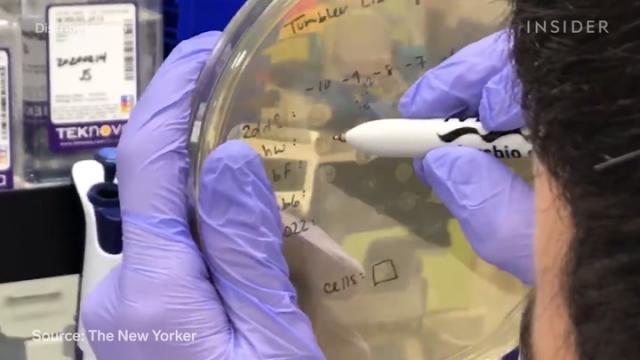
The White House appears to have silenced Surgeon General Jerome Adams, one of the only voices speaking about how the coronavirus outbreak is impacting minority communities, according to a new report from Politico.
Adams hasn't attended a press briefing since April 10, when he made controversial remarks about the transmission of coronavirus in minority communities, suggesting that they were engaging in behaviors that might make them more prone to catching the disease.
"Avoid alcohol, tobacco and drugs," Adams had advised communities of color at that news conference. "We need you to do this, if not for yourself, then for your abuela. Do it for your granddaddy. Do it for your Big Mama. Do it for your Pop-Pop."
Since then, he hasn't been invited to take part in a White House coronavirus press briefing, and has gone from making more than ten TV appearances in a week to just one last week.
The White House and Surgeon General's office did not immediately respond to Business Insider's request for comment.

People wait in line in their cars to get tested for COVID-19 at Roseland Community Hospital on April 3, 2020.E. Jason Wambsgans/Chicago Tribune/Tribune News Service via Getty Images
Health officials told Politico that Adams' silencing has been a loss, as he's been a major advocate for communities of color, and one of the few members in the US government discussing the outbreak's impact on minority groups.
"No one at the task force is really talking about this, consistently, but Jerome," one official at the Department of Health and Human Services (HHS) told Politico.
Another former HHS official told the outlet that Adams tends to get in trouble when he goes "off-script," but said "his heart is in the right place."
The report comes as limited data shows African Americans dying of the coronavirus at disproportionately higher rates
While there remains limited information on the disease's impact by race in the US — just four states have broken down their coronavirus cases by race so far — existing data shows that African Americans have an outsize risk of getting a case of COVID-19 so severe that it leads to death.
Data from Michigan shows that while African Americans make up 14% of the state's population of 1.4 million, they represent 40% of the coronavirus deaths in the state
—Mark D. Levine (@MarkLevineNYC) April 3, 2020
It is a similar story in Illinois, where 528 African Americans have died out of a recorded 1,349 deaths, representing 39% of the total figure. The black community in the state numbers 1.8 million, or 14.6% of the population.
The African American community has been disproportionately affected in Kansas and North Carolina as well, according to the data released by the two states.
In Kansas, where just 6.1% of the state's population is black, 31 out of the total 100 coronavirus deaths were African-American.
In North Carolina, black people make up 39% of the total coronavirus cases, despite only accounting for 22% of the total population.
Dr. Lisa Cooper, a medical expert and social epidemiologist with the Johns Hopkins Bloomberg School of Public Health, told US News & World Report that broader social disadvantage was the reason black people are worse hit.
She noted that "as a group, African Americans in the US have higher rates of poverty, housing and food insecurity, unemployment or underemployment, and chronic medical conditions, and disabilities."
Dr. Camara Jones, a family physician, epidemiologist, and visiting fellow at Harvard University, also told ProPublica: "This is the time to name racism as the cause of all of those things. The over-representation of people of color in poverty and white people in wealth is not just a happenstance … It's because we're not valued."
A phenomenon called the "Tuskegee Effect" — a phenomenon referring to African Americans being less likely to seek medical help for ailments because of a mistrust of a historically racist US health system— has also been cited.

President Donald Trump and Vice President Mike Pence at a White House coronavirus briefing on March 26, 2020.More Drew Angerer/Getty Images
It is also possible, however, that the Illinois and Michigan data are skewed by the fact that the largest coronavirus outbreaks in those states are in Chicago and Detroit, which both have large African American populations.
While it appears that black communities are being harder hit by the outbreak, demographic information has by and large been a missing puzzle piece to the understanding of the virus.
According to data released by the Centers for Disease Control and Prevention (CDC) on Sunday, 65% of the cases had no specified race.
Kristen Clarke, executive director of the Lawyers' Committee for Civil Rights Under Law, said it was "astounding" that the CDC has not collected more complete demographic data, according to Politico.
"The department of Health and Human Services has not offered a concrete plan about how it intends to tackle the problem in front of us," Clarke told reporters on Monday.
"The fact [is] they do not have race information tied to all of their data. We know that our communities are being ravaged by COVID and the federal government has a role to play."
Kirsten Nordlund, a spokesperson for the CDC, told Politico that it has been a challenge to get demographic information from health systems that are extremely busy tackling the pandemic.
"Health departments try to get complete information on every case, but during a large-scale pandemic it is understandable that these health departments may not be able to gather all the information about each case," Nordlund said.
"We are exploring using other avenues to supplement this information when possible."
Read the original article on Business Insider
Under Trump, coronavirus scientists can speak — as long as they mostly toe the line
Trump claims his CDC director was 'misquoted' on second wave of covid-19
WASHINGTON POST APRIL 22, 2020
Robert Redfield, director of the Centers for Disease Control and Prevention, issued a candid warning Tuesday in a Washington Post interview: A simultaneous flu and coronavirus outbreak next fall and winter “will actually be even more difficult than the one we just went through,” adding that calls and protests to “liberate” states from stay-at-home orders — as President Trump has tweeted — were “not helpful.”
The next morning, Trump cracked down with a Twitter edict: Redfield had been totally misquoted in a cable news story summarizing the interview, he claimed, and would be putting out a statement shortly.
By Wednesday evening, Redfield appeared at the daily White House briefing — saying he had been accurately quoted after all, while also trying to soften his words as the president glowered next to him.
“I didn’t say that this was going to be worse,” Redfield said. “I said it was going to be more difficult and potentially complicated because we’ll have flu and coronavirus circulating at the same time.”
He added: “ ‘It’s more difficult’ doesn’t mean it’s going to be more impossible.”
 © Jabin Botsford/The Washington Post President Trump listens as Dr. Robert Redfield, director of the Centers for Disease Control and Prevention, at a coronavirus briefing at the White House Wednesday.
© Jabin Botsford/The Washington Post President Trump listens as Dr. Robert Redfield, director of the Centers for Disease Control and Prevention, at a coronavirus briefing at the White House Wednesday.The remarkable spectacle provided another illustration of the president’s tenuous relationship with his own administration’s scientific and public health experts, where the unofficial message from the Oval Office is an unmistakable warning: Those who challenge the president’s erratic and often inaccurate coronavirus views will be punished — or made to atone.
In a statement Wednesday, for example, Rick Bright — who until recently led the agency working on a coronavirus vaccine — said he was removed from his post for resisting efforts to “provide an unproven drug on demand to the American public.”
The result is a culture in which public health officials find themselves scrambling to appease and placate Trump, a mercurial boss who is focused as much on political and economic considerations as scientific ones.
An internal White House “Covid Mail” email address, for instance, exists to receive queries and suggestions from “friends and family” as well as random individuals — including doctors and business owners — from around the country who have reached out to White House officials. Those emails then get farmed out to the appropriate agencies — from the Food and Drug Administration to the Department of Health and Human Services — but some officials have privately worried that these missives receive priority and distract from more crucial scientific pursuits.

NEW YORK, NEW YORK - APRIL 22: Hotel room lights in the shape of a heart on the side of the Standard Hotel in the Meatpacking District during the COVID-19 pandemic on April 22, 2020 in New York City. COVID-19 has spread to most countries around the world, claiming over 185,000 lives with infections over 2.7 million people. (Photo by Gotham/Getty Images)
In another instance, Nancy Messonier, the CDC’s director of the National Center for Immunization and Respiratory Diseases, was removed from her post as her agency’s coronavirus response head after sounding early alarms that Americans should begin preparing for “significant disruption” to their lives from a “severe illness.” The CDC held its last daily briefing on March 9 — a forum through which the nation would normally receive critical public health information — in part out of a desire not to provoke the president.
“I think the main media briefing has been the task force briefing,” Redfield said in his interview with The Post on Tuesday, asked about the now-defunct CDC briefing. “A lot of the flow of the briefings probably had to do with where the response was grounded.”
And Surgeon General Jerome Adams seemed to go out of his way to lavish praise on Trump in an interview on CNN last month, claiming the 73-year-old president was “healthier than what I am” — a comment the 45-year-old physician later walked back in a number of tweets.
“We hope that science and the public health experts are leading the politicians, that their voices are in the foreground, and that the politicians follow their advice,” said Matt Seeger, who has researched crisis and emergency risk communication for the past 35 years at Wayne State University. “But in this case, the political agenda seems to be setting the agenda for the subject matter experts, which is exactly the opposite of the way we would expect to have this happen.”
Seeger, who has watched the daily White House briefings and said he has seen some of the administration’s health professionals speak in other forums, added that “it’s very clear the public health professionals have been self-censoring their statements.” They are, he added, “being very thoughtful and measured and probably adjusting their statements they don’t run the risk of running afoul of the political agenda. That’s very problematic.”
The White House dismissed the idea there was any undue pressure on public health officials from the president.
“Despite the media’s ridiculous efforts to somehow create distance between the president and his top health experts, it is simply fake news,” White House spokesman Judd Deere said in a statement. “President Trump has relied on and consulted with Dr. Adams, Dr. Birx, Dr. Fauci, Dr. Hahn, Dr. Redfield, and many others as he has confronted this unforeseen, unprecedented crisis and put the full power of the federal government to work to slow the spread, save lives, and place this great country on a data-driven path to opening up again.”
One senior administration official said Trump is also more receptive to the scientists and doctors in private than his public statements indicate. He is especially respectful of Deborah Birx, who oversees the administration’s coronavirus response, and has figured out a way to gently push back against the president, the official said.
The president has described Birx in positive terms to other confidants and always wants her at the briefing lectern, even as his opinion wavers on other task force members. She regularly spends several hours a day with the president and top aides, including Trump son-in-law and senior adviser Jared Kushner.
During Tuesday’s coronavirus news conference, Birx seemed hesitant to directly contradict Trump — who has made clear he is eager to see states begin to reopen their economy as quickly as possible — when asked about the plans by Georgia’s governor to reopen places like gyms and nail and hair salons.
“So if there’s a way that people can social distance and do those things, then they can do those things,” Birx said. “I don't know how, but people are very creative.”
During Wednesday’s task force meeting, a White House official said, the group discussed Georgia’s plans, as well as their concerns that the state’s proposal does not necessarily allow for safe and responsible distances to be maintained, or for good hygiene practices. And during the briefing Wednesday, Trump also addressed his concerns with the plan, claiming he told Georgia Gov. Brian Kemp (R) he strongly disagrees with his decision, which he called “too soon.”
This month, Anthony S. Fauci, an infectious disease expert and coronavirus task force member, began a briefing by offering a seeming apology for comments he had made to CNN’s Jake Tapper, in which he said that earlier mitigation efforts “could have saved lives.” Fauci said he had not intended to criticize Trump in responding to a hypothetical question with “the wrong choice of words,” but stressed that his clarification was entirely “voluntary.”
On Wednesday, asked if health professionals are unable to speak freely in Trump’s administration, Fauci dismissed the suggestion, saying, “Here I am.”
“I think the main media briefing has been the task force briefing,” Redfield said in his interview with The Post on Tuesday, asked about the now-defunct CDC briefing. “A lot of the flow of the briefings probably had to do with where the response was grounded.”
And Surgeon General Jerome Adams seemed to go out of his way to lavish praise on Trump in an interview on CNN last month, claiming the 73-year-old president was “healthier than what I am” — a comment the 45-year-old physician later walked back in a number of tweets.
“We hope that science and the public health experts are leading the politicians, that their voices are in the foreground, and that the politicians follow their advice,” said Matt Seeger, who has researched crisis and emergency risk communication for the past 35 years at Wayne State University. “But in this case, the political agenda seems to be setting the agenda for the subject matter experts, which is exactly the opposite of the way we would expect to have this happen.”
Seeger, who has watched the daily White House briefings and said he has seen some of the administration’s health professionals speak in other forums, added that “it’s very clear the public health professionals have been self-censoring their statements.” They are, he added, “being very thoughtful and measured and probably adjusting their statements they don’t run the risk of running afoul of the political agenda. That’s very problematic.”
The White House dismissed the idea there was any undue pressure on public health officials from the president.
“Despite the media’s ridiculous efforts to somehow create distance between the president and his top health experts, it is simply fake news,” White House spokesman Judd Deere said in a statement. “President Trump has relied on and consulted with Dr. Adams, Dr. Birx, Dr. Fauci, Dr. Hahn, Dr. Redfield, and many others as he has confronted this unforeseen, unprecedented crisis and put the full power of the federal government to work to slow the spread, save lives, and place this great country on a data-driven path to opening up again.”
One senior administration official said Trump is also more receptive to the scientists and doctors in private than his public statements indicate. He is especially respectful of Deborah Birx, who oversees the administration’s coronavirus response, and has figured out a way to gently push back against the president, the official said.
The president has described Birx in positive terms to other confidants and always wants her at the briefing lectern, even as his opinion wavers on other task force members. She regularly spends several hours a day with the president and top aides, including Trump son-in-law and senior adviser Jared Kushner.
During Tuesday’s coronavirus news conference, Birx seemed hesitant to directly contradict Trump — who has made clear he is eager to see states begin to reopen their economy as quickly as possible — when asked about the plans by Georgia’s governor to reopen places like gyms and nail and hair salons.
“So if there’s a way that people can social distance and do those things, then they can do those things,” Birx said. “I don't know how, but people are very creative.”
During Wednesday’s task force meeting, a White House official said, the group discussed Georgia’s plans, as well as their concerns that the state’s proposal does not necessarily allow for safe and responsible distances to be maintained, or for good hygiene practices. And during the briefing Wednesday, Trump also addressed his concerns with the plan, claiming he told Georgia Gov. Brian Kemp (R) he strongly disagrees with his decision, which he called “too soon.”
This month, Anthony S. Fauci, an infectious disease expert and coronavirus task force member, began a briefing by offering a seeming apology for comments he had made to CNN’s Jake Tapper, in which he said that earlier mitigation efforts “could have saved lives.” Fauci said he had not intended to criticize Trump in responding to a hypothetical question with “the wrong choice of words,” but stressed that his clarification was entirely “voluntary.”
On Wednesday, asked if health professionals are unable to speak freely in Trump’s administration, Fauci dismissed the suggestion, saying, “Here I am.”

© Jabin Botsford/The Washington Post President Donald J. Trump listens to Anthony Fauci, director of the National Institute of Allergy and Infectious Diseases, at a coronavirus task force briefing Friday, April 17, 2020.
Many public health experts, however, say they are frustrated at what they see happening during the daily briefings, with the scientists being sidelined. According to a Post analysis, since the federal guidelines were announced on March 16, Trump has spoken 63 percent of the time, compared with Birx at 10 percent and Fauci at 5 percent.
“For most of us in the field, there’s frustration with the dance that we’re seeing,” said Jeanne Marrazzo, director of the Division of Infectious Diseases at the University of Alabama at Birmingham School of Medicine. “Most of us in the field are incredibly frustrated that they are being put in that position, but also incredibly grateful that they are willing to do it.”
Trump also regularly tells visitors to the Oval Office that he is in touch with doctors in New York — including his own — and many others he knows personally.
Guidelines that were drafted by the CDC and Federal Emergency Management Agency for safely reopening the country were watered down by White House officials before they were published, officials say. A person involved in the White House revision of the guidelines, however, said the goal was simply to make them understandable to the public.
Bright, the former director of the Biomedical Advanced Research and Development Authority who was moved to a narrower role at NIH this week, had expressed opposition to the way hydroxychloroquine was being politicized by the president and others in the administration, according to two people familiar with the discussions. Two senior administration officials said he repeatedly clashed with his boss, Robert Kadlec, the HHS assistant secretary for preparedness and response. One person familiar with the situation said Bright’s departure was long discussed among top HHS officials because of dissatisfaction with his job performance.
In a statement, an HHS spokeswoman seemed to dispute Bright’s assertions that he was removed because of his opposition to the anti-malaria medications chloroquine and hydroxychloroquine. The spokeswoman said Bright requested an authorization from the FDA that enabled officials to add chloroquine to the national stockpile of emergency medical equipment and medications.
An adviser familiar with the virus response said the doctors were attempting to communicate with the country and follow crisis management guidelines. The president, on the other hand, this person said, “is trying to win a political battle.”
“He’s broken every rule of maintaining public trust, if you’re trying to do crisis communications for the entire public,” the adviser said, speaking anonymously to share a candid assessment. “I’m not sure that is what he’s trying to do.”
Health and Human Services Secretary Alex Azar, who once led the coronavirus response meetings as chairman of the task force, attends most in person but sometimes attends via phone or teleconference. An HHS spokeswoman said other officials also sometimes attend remotely.
The White House also recently installed Michael Caputo, a longtime Trump loyalist, to run communications at HHS.
Within the agencies, less public-facing health officials are also struggling with the requests coming from the White House. Ideas passed along through the internal “Covid Mail” email system are routed largely to the health agencies. There have been messages to the FDA on testing, to the CDC on surveillance and epidemiology; and to NIH on vaccines.
Because the missives are coming from the White House, agency officials imbue them with a sense of urgency. “And then everyone has to drop what they’re doing,” a senior administration official said.
Many public health experts, however, say they are frustrated at what they see happening during the daily briefings, with the scientists being sidelined. According to a Post analysis, since the federal guidelines were announced on March 16, Trump has spoken 63 percent of the time, compared with Birx at 10 percent and Fauci at 5 percent.
“For most of us in the field, there’s frustration with the dance that we’re seeing,” said Jeanne Marrazzo, director of the Division of Infectious Diseases at the University of Alabama at Birmingham School of Medicine. “Most of us in the field are incredibly frustrated that they are being put in that position, but also incredibly grateful that they are willing to do it.”
Trump also regularly tells visitors to the Oval Office that he is in touch with doctors in New York — including his own — and many others he knows personally.
Guidelines that were drafted by the CDC and Federal Emergency Management Agency for safely reopening the country were watered down by White House officials before they were published, officials say. A person involved in the White House revision of the guidelines, however, said the goal was simply to make them understandable to the public.
Bright, the former director of the Biomedical Advanced Research and Development Authority who was moved to a narrower role at NIH this week, had expressed opposition to the way hydroxychloroquine was being politicized by the president and others in the administration, according to two people familiar with the discussions. Two senior administration officials said he repeatedly clashed with his boss, Robert Kadlec, the HHS assistant secretary for preparedness and response. One person familiar with the situation said Bright’s departure was long discussed among top HHS officials because of dissatisfaction with his job performance.
In a statement, an HHS spokeswoman seemed to dispute Bright’s assertions that he was removed because of his opposition to the anti-malaria medications chloroquine and hydroxychloroquine. The spokeswoman said Bright requested an authorization from the FDA that enabled officials to add chloroquine to the national stockpile of emergency medical equipment and medications.
An adviser familiar with the virus response said the doctors were attempting to communicate with the country and follow crisis management guidelines. The president, on the other hand, this person said, “is trying to win a political battle.”
“He’s broken every rule of maintaining public trust, if you’re trying to do crisis communications for the entire public,” the adviser said, speaking anonymously to share a candid assessment. “I’m not sure that is what he’s trying to do.”
Health and Human Services Secretary Alex Azar, who once led the coronavirus response meetings as chairman of the task force, attends most in person but sometimes attends via phone or teleconference. An HHS spokeswoman said other officials also sometimes attend remotely.
The White House also recently installed Michael Caputo, a longtime Trump loyalist, to run communications at HHS.
Within the agencies, less public-facing health officials are also struggling with the requests coming from the White House. Ideas passed along through the internal “Covid Mail” email system are routed largely to the health agencies. There have been messages to the FDA on testing, to the CDC on surveillance and epidemiology; and to NIH on vaccines.
Because the missives are coming from the White House, agency officials imbue them with a sense of urgency. “And then everyone has to drop what they’re doing,” a senior administration official said.










